Rennie Scaysbrook | March 8, 2019
The motorcycle that arguably started it all for the Honda Motor Company, the Super Cub, is back! Everything old is new again.
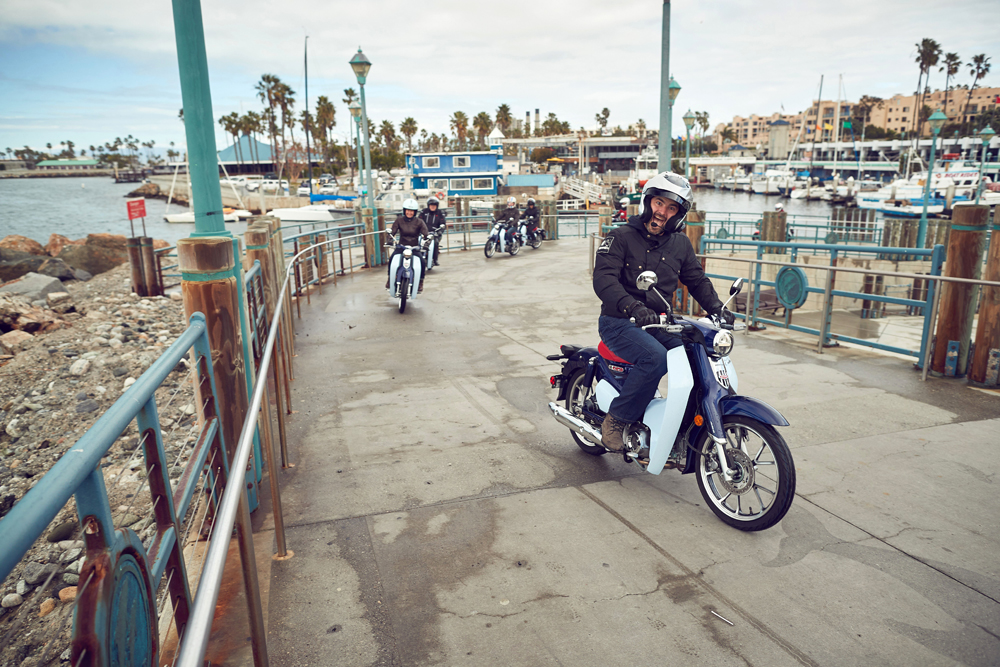 You can meet the nicest people on a Honda. You can also meet complete morons.
You can meet the nicest people on a Honda. You can also meet complete morons.
Picture this: the year is 1956. Two Japanese businessmen return from Europe after a mission to settle on a destination for the first offshore subsidiary of the still very young Honda Motor Company.
Having started business only eight years prior on September 24, 1948, Soichiro Honda and his managing director, Takeo Fujisawa, are full of the energy that fuels young start-ups. As such, they decide to take on what is undoubtedly a huge risk. They forgo Europe—then the undisputed home of the international motorcycle industry—in favor of the United States as the location of the first Honda distributor outside of Japan.
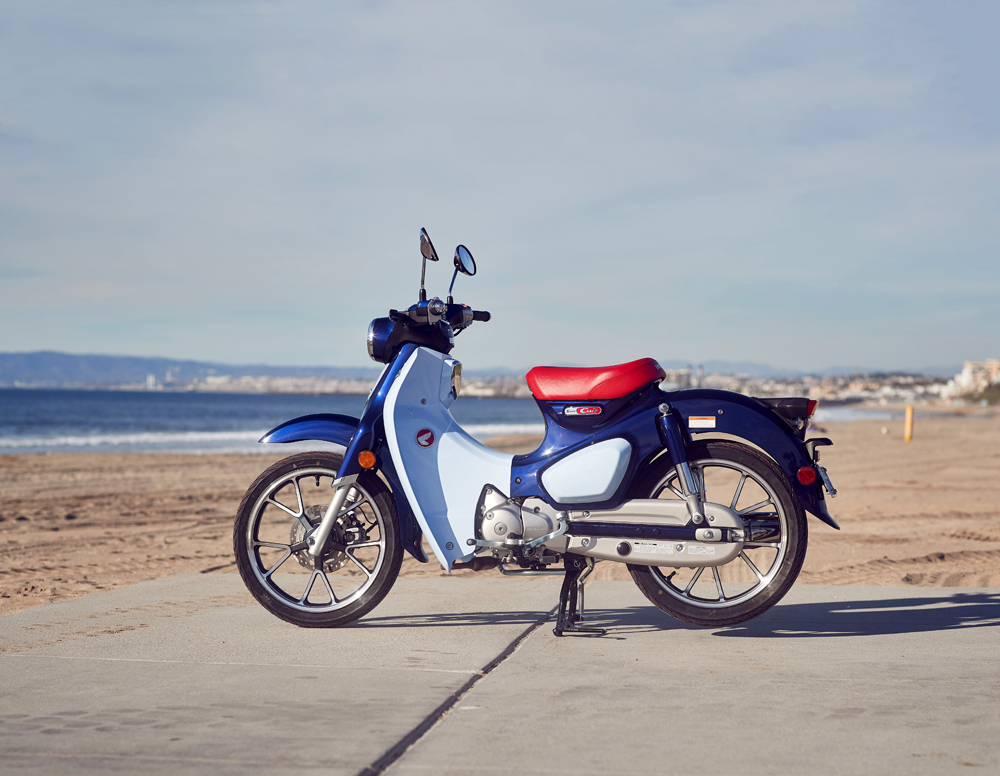 The step-through lives on. Very little has changed in overall styling from this and the original Cub of 1959.
The step-through lives on. Very little has changed in overall styling from this and the original Cub of 1959.
American Honda is founded on September 11, 1959, its headquarters located at 4077 West Pico Boulevard, Los Angeles. Thirty-nine-year-old Kihachiro Kawashima is assigned the position of general manager, and he personally sets the goal of selling 1000 units per month, with the lineup comprising the Honda Dream and Benly street bikes, and a new machine set to revolutionize personal transportation around the globe.
One year prior, in 1958, Honda releases the first Super Cub C100 in Japan. Powered by a 49cc, three-speed motor producing 4.5 horsepower, the Super Cub presents the key to the American market, a key that will open the motorcycling door to an entirely new generation of people.
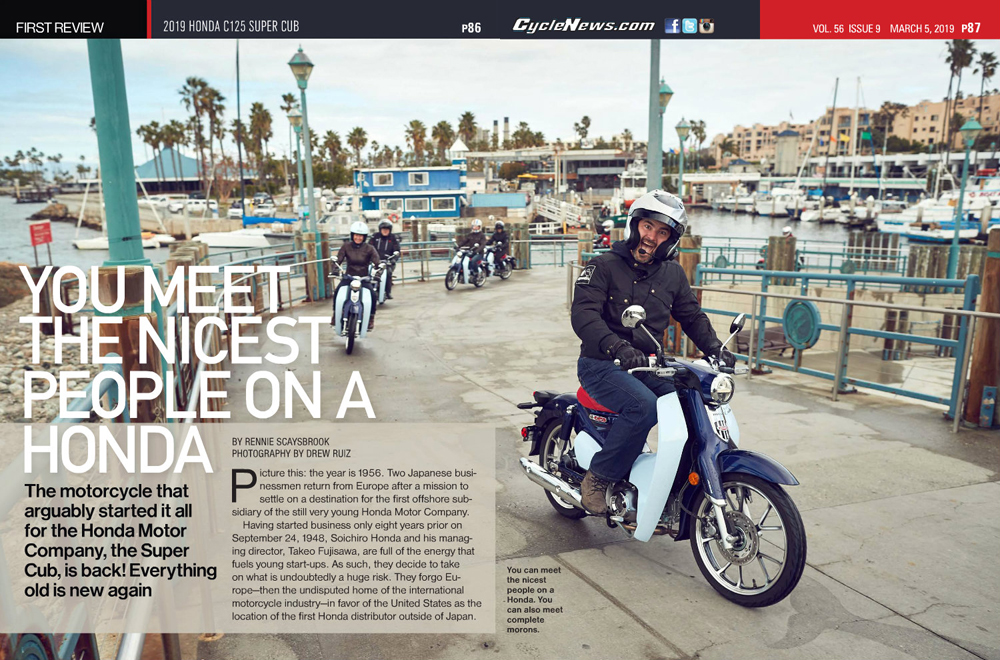
Photography by Drew Ruiz
Honda and his team know they’ve hit on something big. When Fujisawa sees the final mockup of the first Super Cub in Japan in 1957, he proudly exclaims, “We can sell at least 30,000 of these!” Little did his subordinates know the ambitious Fujisawa means 30,000 units per month, not annually.
The first Super Cub goes on sale in the U.S. in the Fall of 1959 but it isn’t initially a hit. Numbers are slow, and by the end of 1959 only 170 new Hondas, a mix of all three models, have been sold to America customers.
Yet Kawashima, Fujisawa and Honda are undeterred. They embark on a ruthless advertising strategy over the next five years, aiming the $250 Cub at college students who could buy with their savings or simple-interest loans. Ads in LIFE magazine and eventually the iconic You Meet The Nicest People on a Honda campaign put Honda motorcycles at the forefront of youth culture, and in 1964, Honda puts in $300,000 for two advertisements in the Academy Awards. The sell is now complete, and by 1970, Honda motorcycles have sold over 500,000 units in North America. A decade after the fresh-faced company landed in Los Angeles, Honda now controls much of the global motorcycle industry.
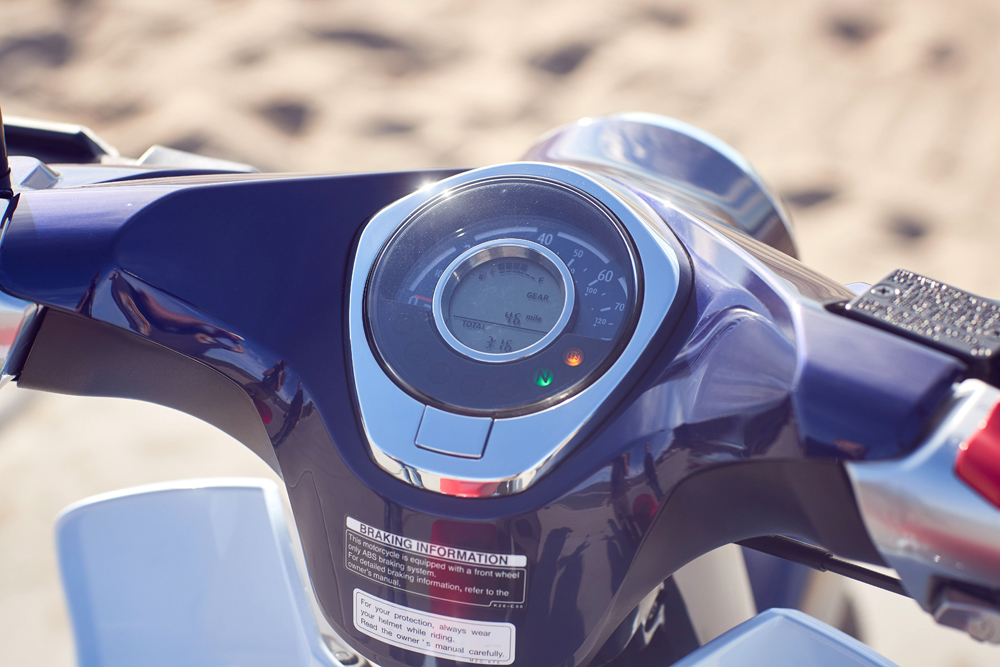 A gear position indicator lives in this here dash.
A gear position indicator lives in this here dash.
The Cub’s social impact is greater than the Model-T Ford and the Toyota Corolla. The cheap and reliable little Cub allows everyone from below the poverty line to top one percent of income owners to go about their day and enjoy motorcycling. By the end of 2017, sales of the Cub—now dubbed the Super Cub and having gone through 11 different variations—surpass the 100,000,000 mark, making the Cub the most popular personal transportation unit ever created.
That’s the short version of the vast, immersive history of the Honda Super Cub. Honda’s little personal transportation marvel has remained part of its global line-up since the beginning in 1959, but it’s not been imported by American Honda to the U.S. since 1983.
That’s all changed because now we have the 2019 Honda C125 Super Cub officially here, as part of Honda’s push back into small-displacement transportation units that have an emphasis on cheap fun, as opposed to any real performance factors.
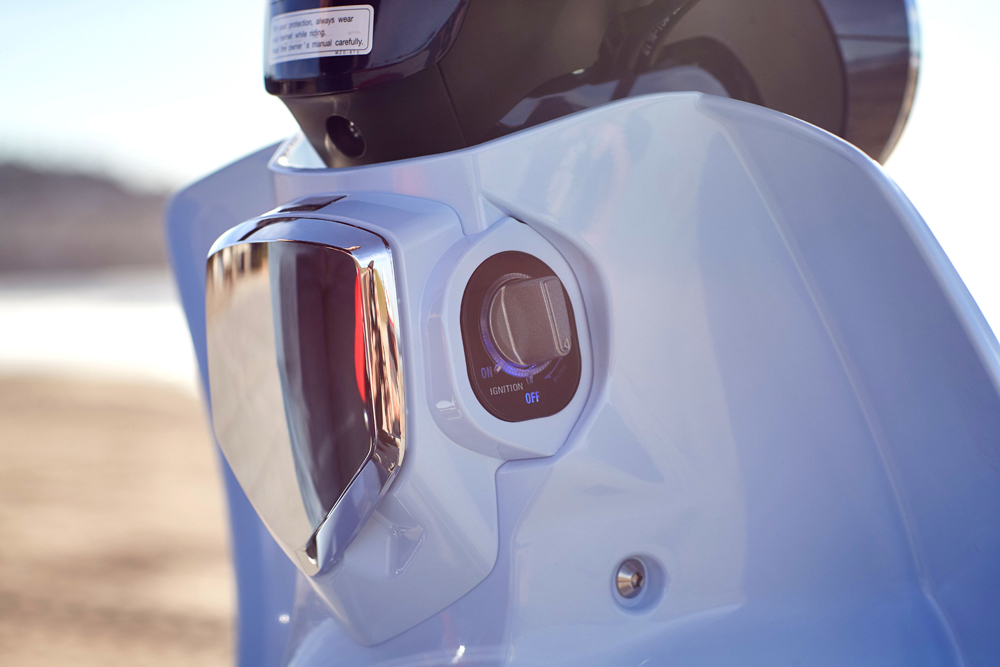 Honda’s used the smart key option for the new Super Cub—no more ignition key.
Honda’s used the smart key option for the new Super Cub—no more ignition key.
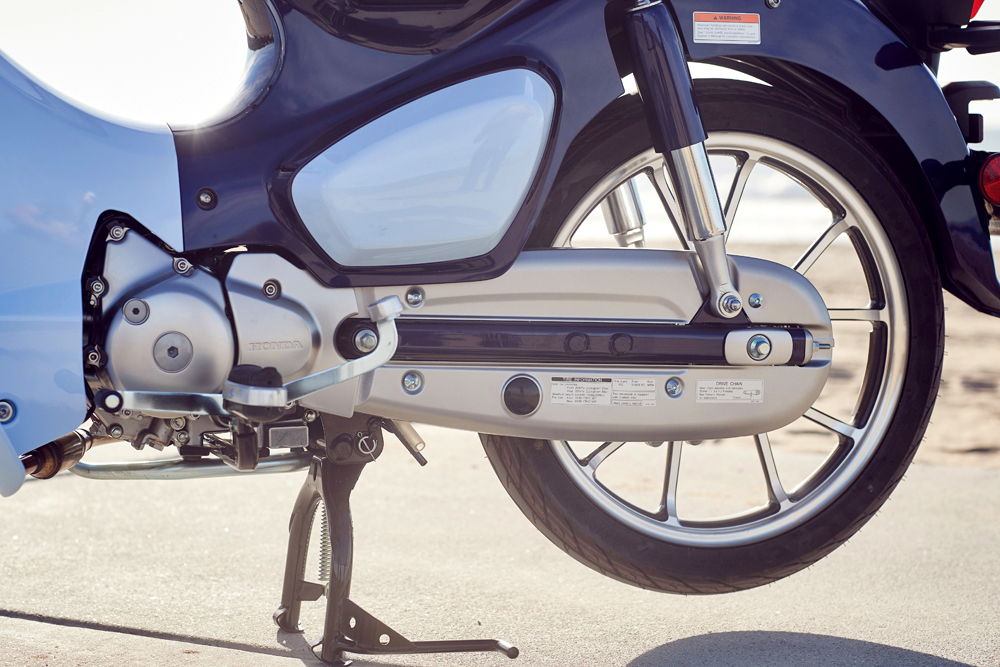 No worries about getting covered in grease with the fully enclosed chain.
No worries about getting covered in grease with the fully enclosed chain.
The new Super Cub is powered by the same 124.9cc four-stroke that sits in the Monkey Bike, itself a derivative from the wildly successful Grom. The motor is as simple as the bike itself—a two-valve, single-cylinder, designed to get massive mileage from the single gallon tank. Honda is claiming “at least” 100 miles from a tank, but we were unable to verify this on our launch ride around Redondo Beach.
The Super Cub gets Honda’s four-speed semi-automatic gearbox, the centrifugal clutch meaning there’s no clutch lever and allows you to pull up to the lights in any gear and not stall. The clutch gets activated when you put a little pressure on the foot lever for the gear change, so all you have to do is roll the throttle slightly and snick the next gear. Simple.
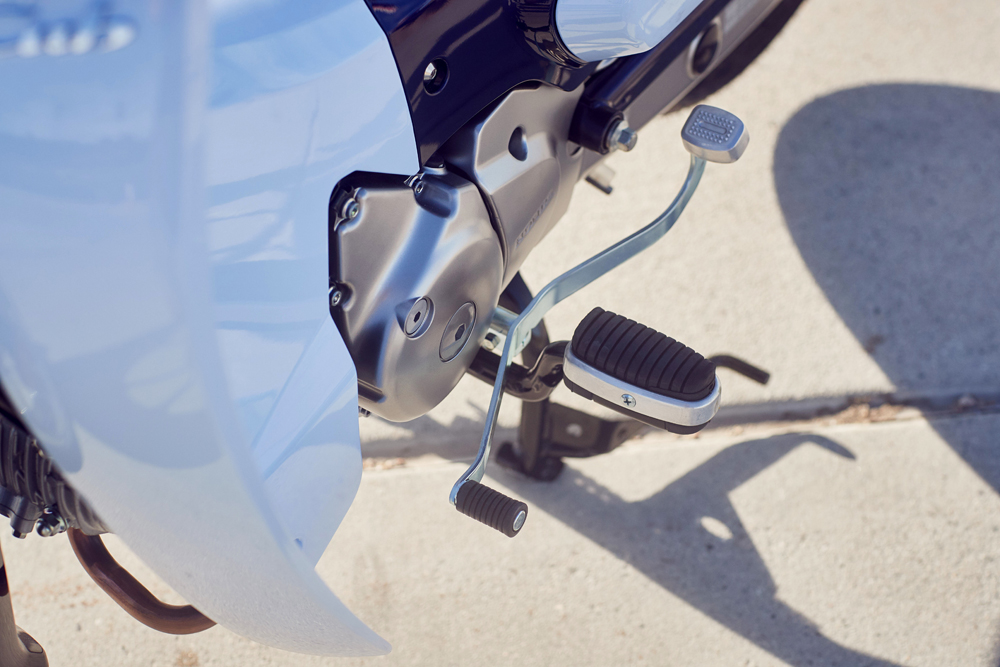 Heel-toe gearshift is a throwback to the original Cub.
Heel-toe gearshift is a throwback to the original Cub.
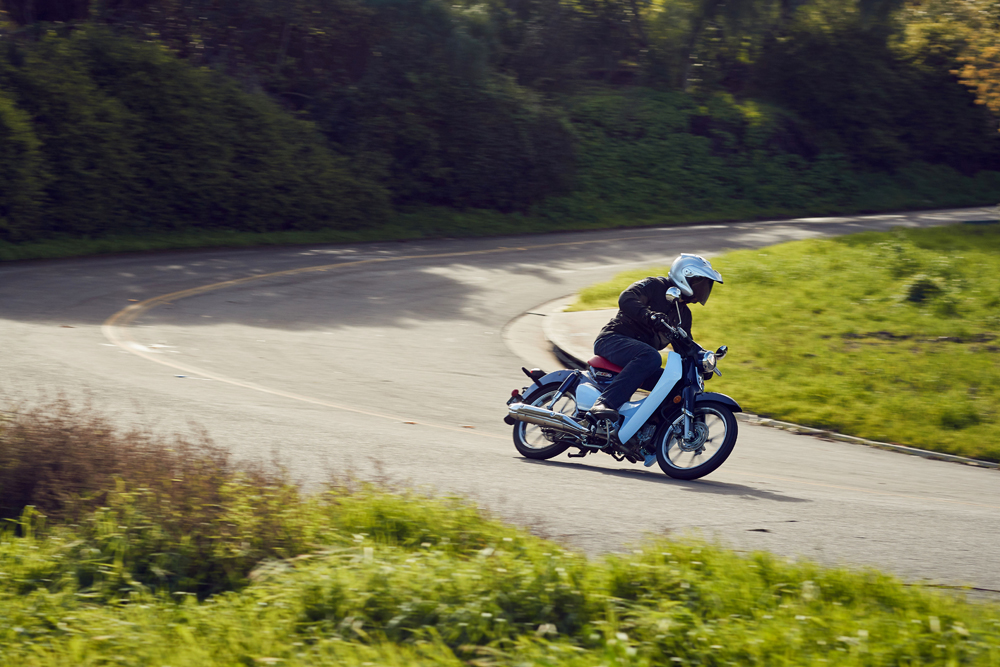 Ripping around the Redondo Beach hills is a blast on the Super Cub.
Ripping around the Redondo Beach hills is a blast on the Super Cub.
Back when the Cub was first created, one of the main design ethos was to ensure it was simple for women to ride—thus the step-thru was born thanks to the motor being horizontally mounted. This same design trait is carried over once again with the new Super Cub, with women one of the primary targets for the new machine. As such, the seat height is a relatively low 30.7 inches, and with the low-set handlebars you feel perched on top, rather than in the chassis like some of the European scooters.
The Super Cub is incredibly fun to ride. I don’t care if you’re WorldSBK Champion or have never ridden before, if you don’t have a laugh on the Super Cub, you might want to see a psychiatrist. It’s got about as much power as a supercharged electric toothbrush, but that’s entirely beside the point. What power is there is delivered in a velvety-smooth fashion, and when mixed with the surprisingly well-damped ride from the skinny 26mm forks and twin shocks out back, it all equates to a seriously good time on two wheels.
Video | 2019 Honda C125 Super Cub Review
There are a few creature comforts on the 2019 edition the OG Cub lacked—Honda’s fitted a smart key so you don’t have to use the old-style ignition key; there’s ABS on the front only; and you have two helmet locks despite there being only one seat (in Europe the Super Cub comes with two seats, but not in the U.S.).
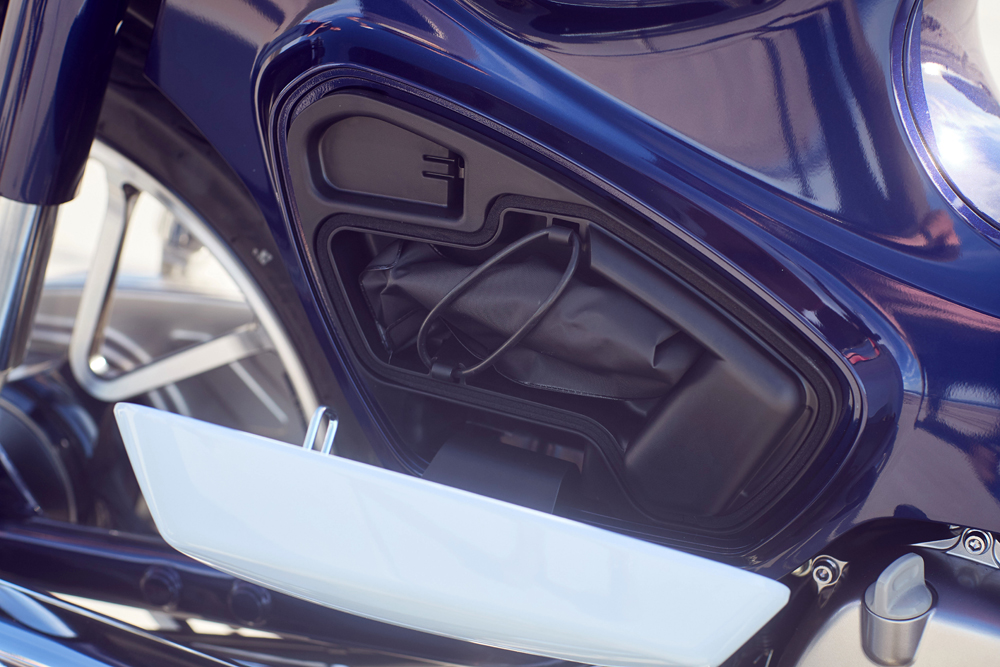 Side-mounted toolbox is tiny, but contains stuff like screwdrivers and wrenches.
Side-mounted toolbox is tiny, but contains stuff like screwdrivers and wrenches.
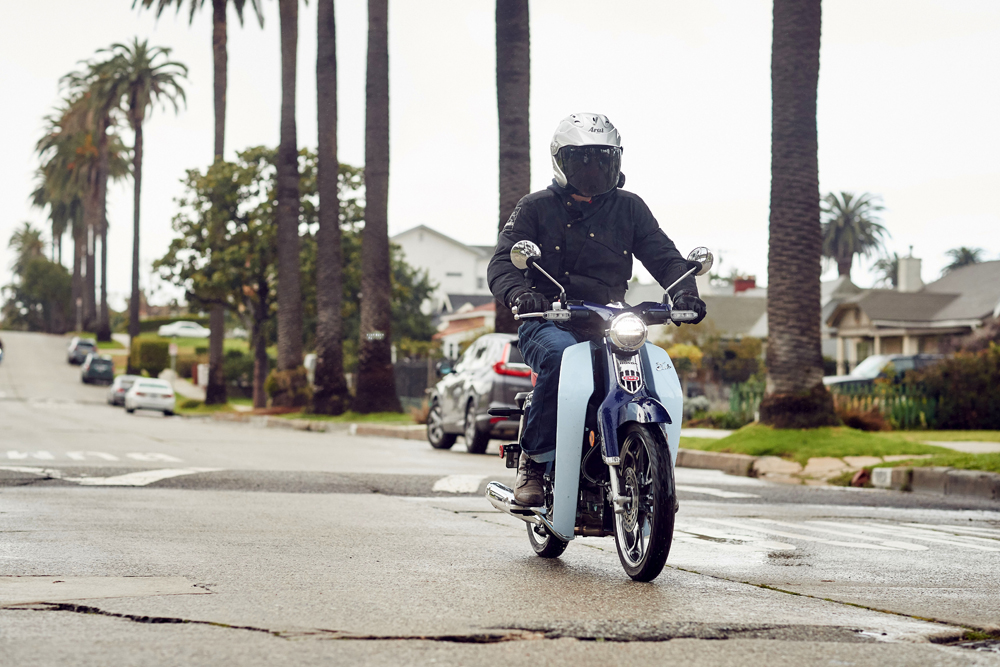 Honda claims over 100 miles from a single gallon of gas with the Super Cub. Not bad.
Honda claims over 100 miles from a single gallon of gas with the Super Cub. Not bad.
That little nuance aside, the Super Cub is one of those motorcycles you indeed can’t help but have fun on. You won’t be taking this thing on the freeway, simply because the highest top speed I saw was about 59 mph, so that means the Super Cub is all about slowing down, enjoying the scenery and the ride.
You don’t get to 100,000,000 units sold if the design isn’t sound, and it’s good to see Honda has hardly messed with the original design. I can’t help but think the Super Cub platform would provide the perfect basis for an electric motorcycle, and when I brought that up with the boffins at America Honda, I got a wry smile.
That’s an argument for another day. Right now, the Super Cub is back, and we are all the better for it.CN
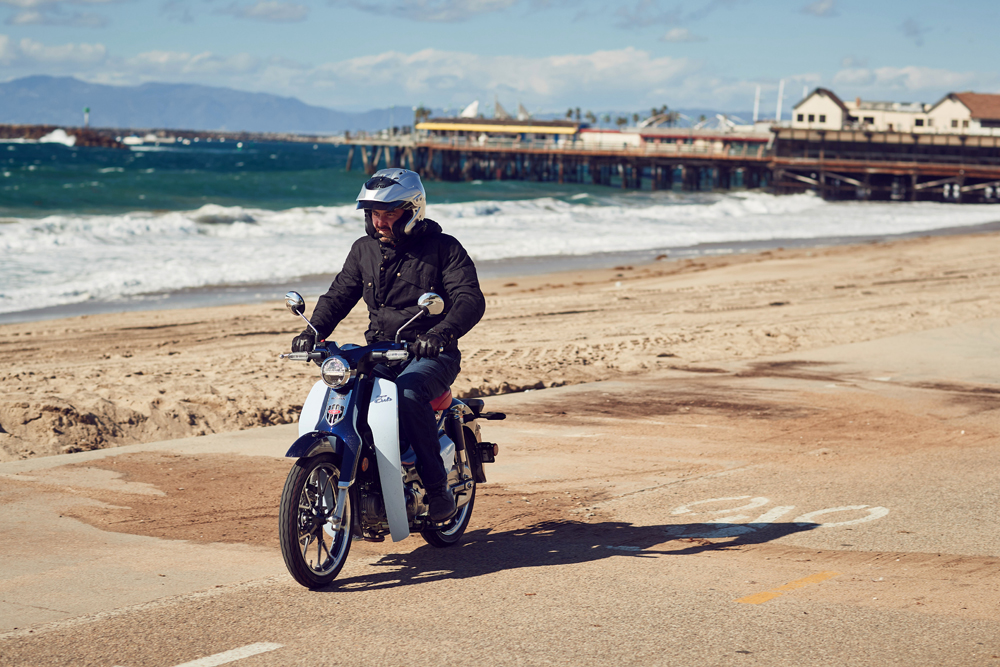 The 2019 Honda C125 Super Cub cruising at the beach.
The 2019 Honda C125 Super Cub cruising at the beach.
There is so much history surrounding not just the Honda Cub/Super Cub, but Honda Motor Company itself, that it’s impossible to document all of it here. However, Honda has given us a few links, which we’d like to share.
This first link is all about the early years of Honda and how they got started in Japan, to their arrival in U.S. and the challenges they faced in convincing the public to try their products.
This second link delves further into the history of the Cub that we summarized in the first half of this review. It’s an excellent volume put together by Honda, detailing one of the most important machines ever created.
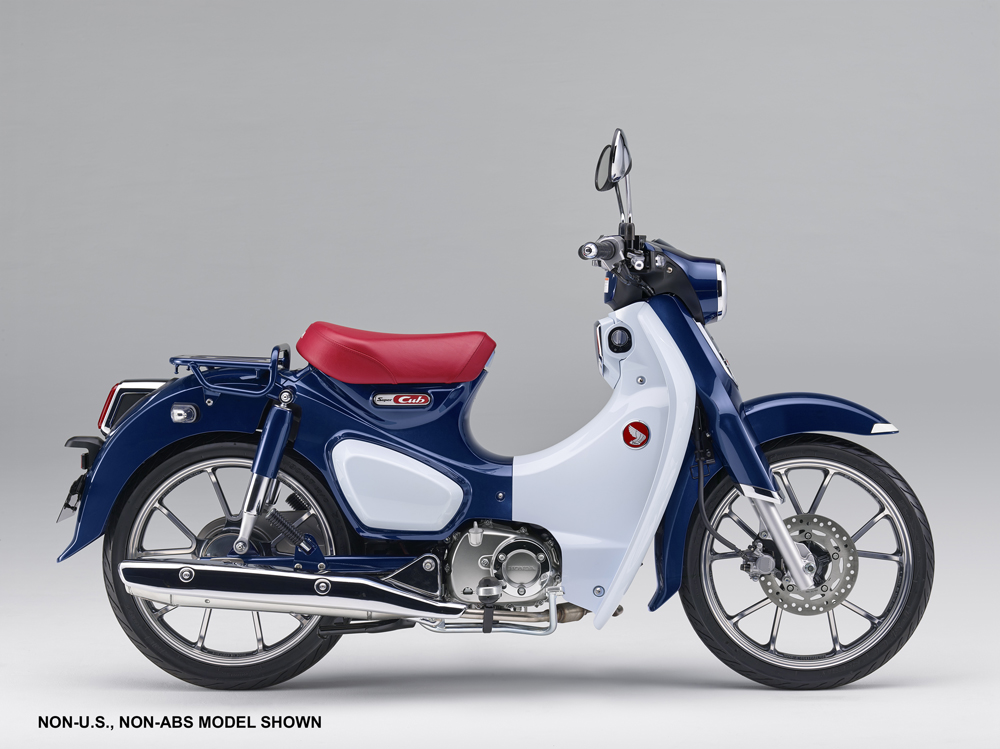
2019 Honda C125 Super Cub Specifications
| MSRP: |
$3,599 |
| Engine: |
Air-cooled, 4-stroke, single |
| Displacement: |
124.9cc |
| Bore x stroke: |
52.4 x 57.9mm |
| Compression ratio: |
9.3:1 |
| Clutch: |
Semiautomatic centrifugal |
| Transmission: |
4-speed |
| Front suspension: |
26mm hydraulic telescopic inverted fork |
| Rear suspension: |
Twin shocks |
| Front wheel travel: |
3.9 in. |
| Rear wheel travel: |
3.3 in. |
| Front brake: |
Hydraulic; single 220mm disc with 2-piston caliper; ABS |
| Rear brake: |
Mechanical leading trailing; single 110mm drum |
| Front tire: |
70/90-17 in. |
| Rear tire: |
80/90-17 in. |
| Wheelbase: |
48.9 in. |
| Seat height: |
30.7 in. |
| Fuel capacity: |
1 gal. |
| Weight (curb, claimed): |
240 lbs. |
| Color: |
Pearl Niltava Blue |